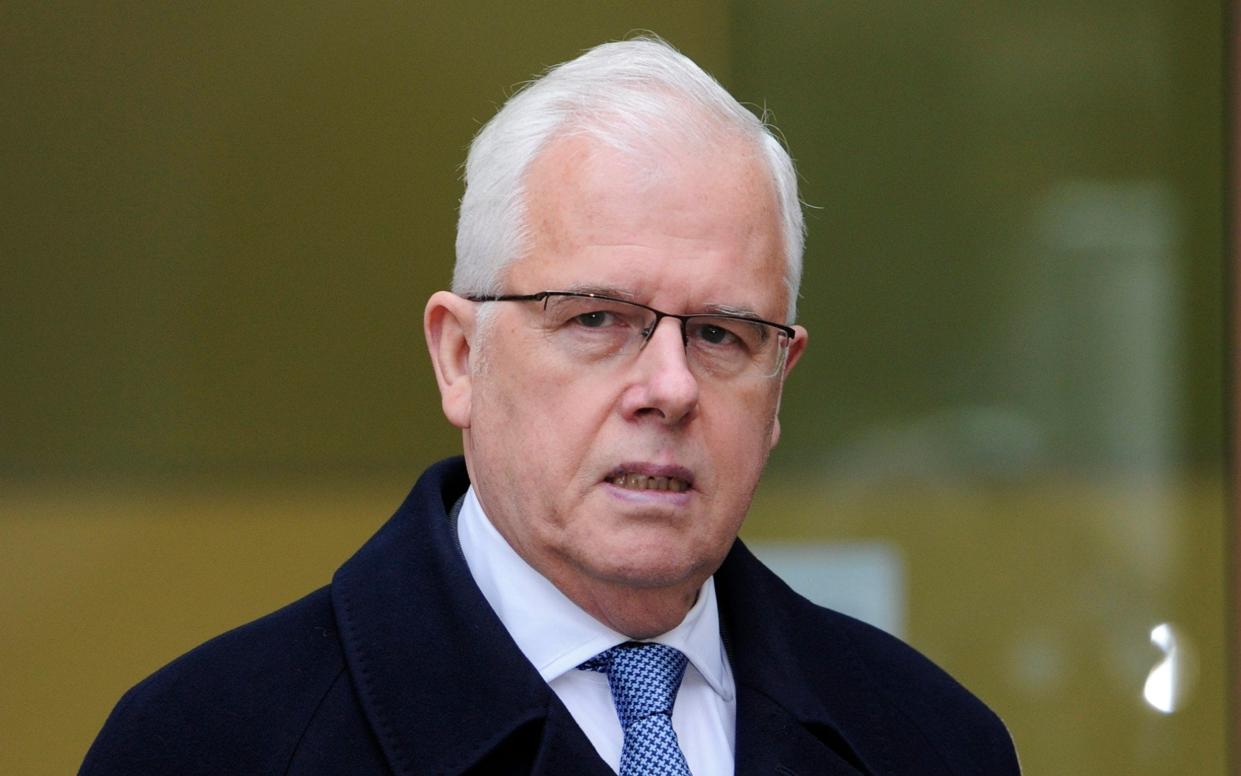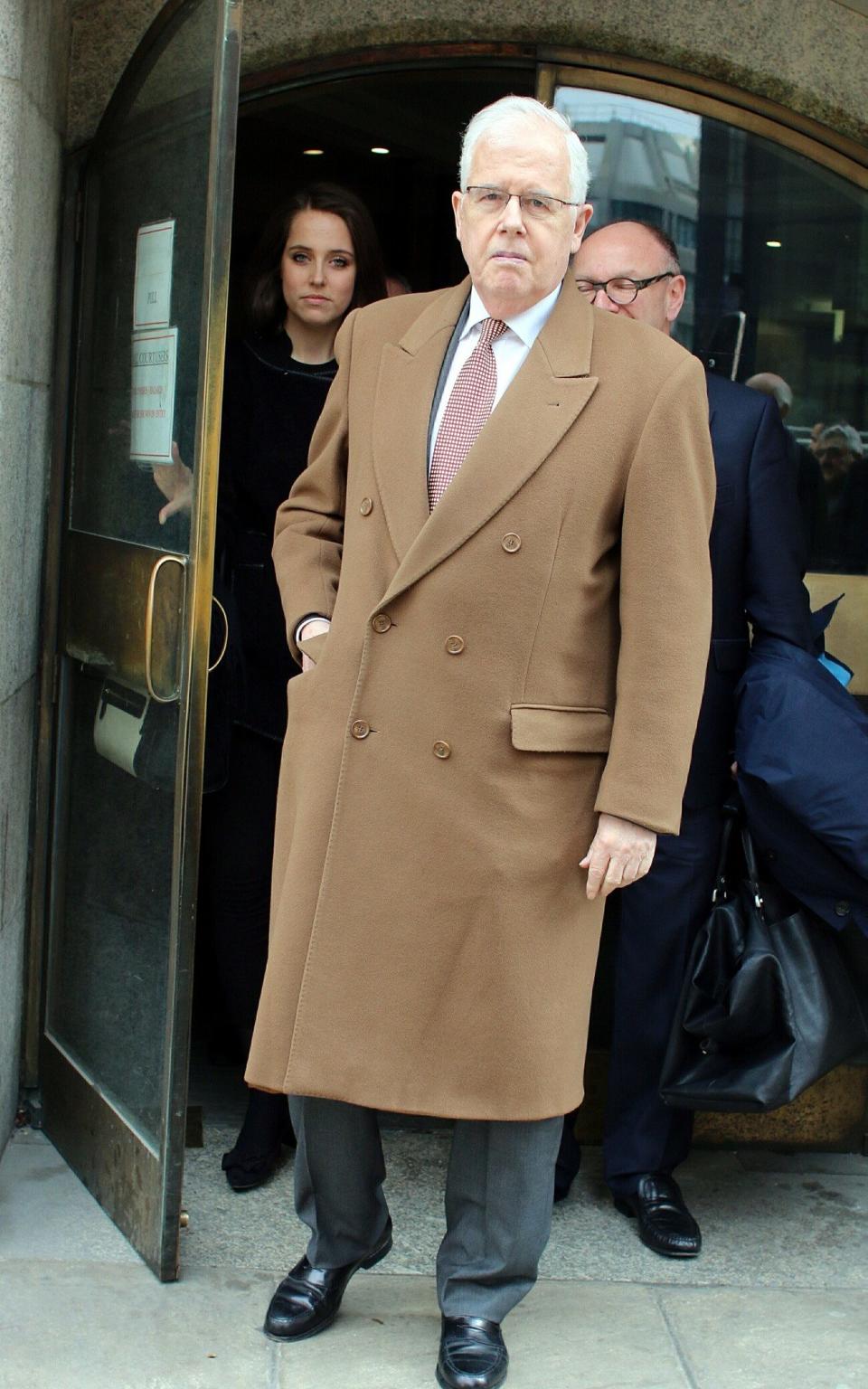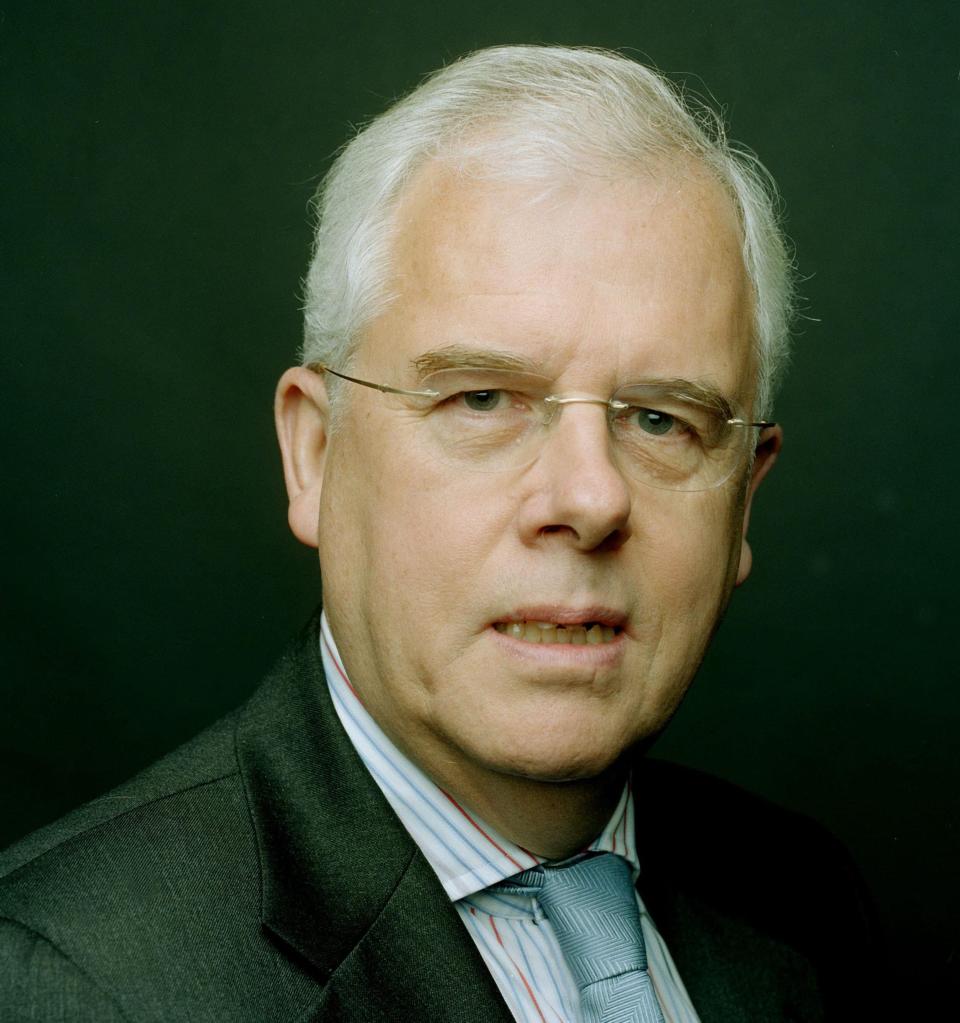John Kay, Sun chief reporter famed for his scoops, exposés and mastery of tabloid-speak – obituary

- Oops!Something went wrong.Please try again later.
- Oops!Something went wrong.Please try again later.
John Kay, who has died aged 77, was one of the journalists to seal the success of the tabloid Sun newspaper with a remarkable tally of exclusives and was widely regarded as the best reporter on Fleet Street.
Among the scoops he liked to call his “belters” were the first picture of the Moors murderer Myra Hindley outside prison and his revelation in 2000 that an MI5 spy had lost a laptop containing classified information on Northern Ireland at a London Tube station.
For some years he covered the royal beat, revealing in 1987 that a tearful Prince Edward had quit the Royal Marines during training. But Kay reckoned his finest hour was the publication in the Sun, two days in advance in December 1992, of the Queen’s entire “Annus Horribilis” Christmas speech in which she reflected on the fire at Windsor Castle and the marital rift between the Prince and Princess of Wales.
In 2012 Kay’s exposé of inadequately equipped British soldiers “sent to their death” against roadside bombs during the Iraq War led to his arrest on a charge of making corrupt payments to a public official, as part of Operation Elveden, Scotland Yard’s investigation into alleged bribes by journalists to police and other public officials.

Successfully arguing that his reporting had served a clear public interest, Kay was acquitted in 2015. But his friends said Kay never recovered from the Elveden trial and the fact that his source had been exposed by the Sun’s owners News Corporation. Between 2004 and 2012, Kay’s “number one military contact” accepted £100,000 from the Sun for tips and stories.
Kay broke a series of exclusives in 2001, including the revelation that the former MI5 chief Stella Rimington was writing her memoirs lifting the lid on the service. Two years later he was first with the news that the Russian billionaire Roman Ambramovich was buying Chelsea football club.
Far from the hard-bitten, uncouth tabloid hack of popular imagination, Kay was an elegant, dapper ex-public school boy renowned for his kindness and generosity to rivals and rookie reporters, whom he mentored and encouraged, as well as his astonishing ability to turn in scoops.
When he arrived at The Sun in the 1970s, a brutal hard-drinking culture prevailed, with journalists often beginning their day with a “heart-starter” as early as 10.30am in the paper’s “local”, the upstairs bar at the Tipperary on the corner of Fleet Street and Bouverie Street known as the Top of the Tip.
One greenhorn recalled Kay’s advice to leave his jacket on the back of his office chair so that the news editor would know he was in the Tip and not out on a job, and could be contacted if a story broke.
Yet Kay’s career, spanning nearly 50 years, almost came to a premature end when personal catastrophe engulfed him in 1977.
John Michael Kay was born on October 28 1943 in London, where his father was managing editor of the Evening News. Educated at Bootham School, York, he read science at Durham University and edited the student newspaper Palatinate. Although an article about “black magic ceremonies”, described as a “nasty piece of pornography” by the university’s pro vice-chancellor, drew official ire, Kay was allowed to continue in the editorial chair.
On graduating, he abandoned an ambition to become a vet and joined The Journal in Newcastle, becoming chief industrial correspondent and then deputy news editor. After a brief spell in London as a features writer for Thomson Newspapers, he returned to The Journal as business editor.
In 1974 Kay began working for The Sun, starting as a general reporter, then as industrial editor. It was in this role, in 1977 when he was 33, that he went to Blackpool to cover the annual TUC conference, an assignment that exposed his dislike of being “on the road” away from the office and interviewing people face-to-face.
In the throes of a nervous breakdown, Kay locked himself in his hotel room for the week, his colleagues from rival papers covering for him by filing stories to the Sun in his name.
Arriving home, a distraught Kay told his Japanese wife Harue that the pressure was too much and he was unable to carry on. He strangled her before drowning her in the bath, then tried six times to commit suicide, including slashing his wrists, throwing himself out of a window, deciding to jump from a bridge on to the Stevenage bypass but finding it was too low, and crashing his car at 80mph.
At St Albans crown court, Kay pleaded not guilty to murdering his wife, but guilty to manslaughter on the ground of diminished responsibility, a plea which was accepted. He was ordered to enter Friern Barnet psychiatric hospital in north London for treatment, the Sun’s editor having written to the court promising to take Kay back as soon as he was fit enough.
He returned in 1990 as the paper’s chief reporter. Two years later, using an unnamed contact in BBC local radio who played it to him down the phone, he secured a world exclusive with an audio recording of the Queen’s Christmas message, covering the split between the Duke and Duchess of York and Princess Anne’s divorce as well as the marital woes of the Prince and Princess of Wales and the Windsor fire.
Kay’s revelations from “Palace insiders” over the years also included the name of the Duke and Duchess of York’s first baby, Beatrice, and that Prince William had met Camilla Parker Bowles in an official acknowledgement of his father’s mistress.

Kay was roasted by the Press Council in 1983 over his “world exclusive interview” with the widow of a Falklands VC which, it turned out, never took place. Not only did she not give such an interview, but at the time the Sun claimed she was talking to Kay, she was actually closeted in a London hotel talking to the rival Daily Mirror. Kay was reprimanded for “a deplorable, insensitive deception on the public”.
A born tabloid wordsmith, he not only wrote but also thought in the pared-down argot of his inky trade. His party piece in the pub was to pick up one of the broadsheet papers and effortlessly declaim its lead story in Sun-speak, mentally rewriting it on the spot.
Twice named reporter of the year in the British Press Awards, in 2005 Kay was ranked among the 40 most influential journalistic figures of the previous 40 years by Press Gazette.
A keen tennis player, Kay reportedly once trounced David Cameron, and played Tim Henman and Andy Murray, predicting that Murray would win Wimbledon because he ruthlessly smashed aces against an amateur.
After his retirement in 2015, Kay cared for his Spanish second wife, Mercedes, at their home in north London until her death in 2017. He spent his final years in a nursing home in Hertford.
John Kay, born October 28 1943, died May 7 2021

